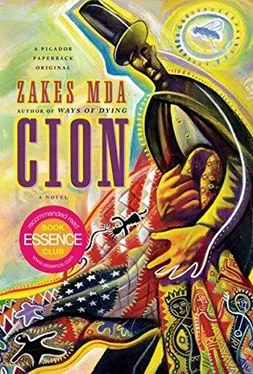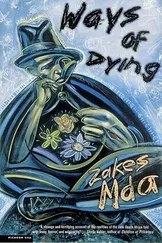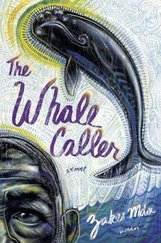It was at this reading that I started the mourning sounds that I have sustained at varying volumes to this point.
I could see tears swelling in Ruth’s eyes. She was clearly proud of her son. She looked at me and smiled. The Bible had finally convinced her of the legitimacy of my profession. Then she looked at Obed as he went on to clarify to the congregation that skillful wailing women were in fact professional mourners. In those days professional mourning was a female occupation. But they could not begrudge his African brother for being a male professional mourner since these were equal opportunity days. One could not discriminate on the basis of gender.
The attention is still on me even when Brother Michael reads from The Second Book of Samuel 12:21–23— Then his servants said to him, “What is this that you have done? You fasted and wept for the child while he was alive, but when the child died, you arose and ate food.” And he said, “While the child was alive, I fasted and wept: for I said, ‘Who can tell whether the Lord will be gracious to me, that the child may live?’ But now he is dead; why should I fast? Can I bring him back again? I shall go to him, but he shall not return to me.”
Throughout this reading I am moaning in monotone, which blends so beautifully — even if I say so myself — with his booming voice. I can see that Brother Michael is fighting for his dignity and for his good name. He will not be outdone by Obed, who, as far as the pastor knows, has not set his foot in church since the days before the man of the cloth came to Kilvert and the boy was forced by his parents to attend church. What he must be smarting about most is the fact that Obed found a more relevant passage about professional mourners than he, even with all his Bible School training.
Occasionally I throw a glance at Obed, who is standing next to Nathan. Nathan is not dressed up for the occasion but is in his dirty work clothes. I can see Obed’s pride from his gestures and his beaming face. Obviously he is explaining all the intricacies of mourning to his friend, who looks rather bemused.
Unlike the funerals back home, no one takes it upon himself or herself to narrate the death of the child. No one even whispers that the child was killed by his own mother and her boyfriend; that the very pious Sister Naomi of Brother Michael’s church was a meth cook on the side; that she used her SUV, one of those I saw parked outside the little chocolate church, as a mobile meth lab; that the fertilizers and chemicals in the concoction exploded one evening, killing the little boy who was playing near the vehicle; that Sister Naomi had sent this little boy and her other children to smurf for her — buying two packets of Sudafed, then moving to the next store to do the same to circumvent the law.
At the funerals back home The Nurse — a person designated by the family of the deceased to narrate the death of the deceased, and that was given that title because in the olden days it would have been the person who had nursed the deceased during the sickness that led to death — would have made meat of this scandalous story. The kind of Nurse who saw himself or herself as a moral guardian of the community would have gone on to give lessons about the dangers of the crystal meth or super-speed that is devastating the rural communities of America, and can be made from the common cold remedies that have ephedrine as an ingredient. He or she would have gone to town blaming the mother and the boyfriend, especially because this was not the first time she had been in trouble with the law. The people of Kilvert do remember, after all, that Sister Naomi was once in the pokey for child endangerment and was released after a strong warning. The Nurse would have uttered all these things in a sad sanctimonious voice under the guise of warning the people against such practices that were destructive to the very soul of the community. But none of these things were even whispered here. To these people a funeral is not a place for recrimination.
After the funeral Sister Naomi’s relatives pay me a few banknotes, mostly singles, and coins, since it was impressed upon them that it is absolutely essential to pay the mourner some money for the mourning to have any effect, even if it is a token fee. Professional mourning without a fee is not professional mourning but just downright pedestrian mourning. They shake my hand and some say: “Thank you, Brother African Shaman,” while others repeat: “Thank you, Son of Egypt.”

I meet Ruth on Monday — the morning after the funeral. She is sitting at her workstation contemplating pieces of fabric, maybe planning where each will go in the grand scheme of cut pieces that are neatly arranged on the table.
“Brother African Shaman, hey?” she says without looking at me. “You know you can’t serve God and be a shaman at the same time?”
“I have never called myself a shaman, Ruth,” I protest.
I cannot be blamed for the labels that people give me. In fact, her son was to blame for my shaman title, which I don’t relish at all. It was of his invention. He is the one who propagated it. Now everyone thinks that I am indeed a shaman. Even the kids hollered when they saw me in my sacred costume after the funeral: “Hey, Brother African Shaman! Give us one of them yells, my man.”
“Yeah, that’s what they called you yesterday,” she says, rubbing it in. “Brother African Shaman. Son of Egypt.”
She looks at me and smiles. She seems to have warmed to me a bit. I suspect it is the result of the biblical justification of my profession. Or perhaps my pharaonic connections — again manufactured by her son — have something to do with it. I return her smile uneasily. I need to tread lightly here. She invites me for a cup of sassafras tea.
“Know what sassafras tea is, Son of Egypt?”
Sarcasm does not suit her.
“This ain’t the one you buy from Kroger,” she says. “That one ain’t no good ’cause it’s made from shaven bark. Bet you never tasted the one I am gonna give you.”
“Never tasted any sassafras tea whatsoever.”
It’s brewed already on the stove. She asks me to bring it and two coffee mugs. The steaming liquid is dark red and the taste is good, especially with sugar and cream.
“You can take it as iced tea as well,” Ruth tells me. “Without cream or sugar…or maybe just a li’l sugar.”
The tea is made from the roots of a young sassafras tree, I learn. Every year at the end of February Mahlon Quigley digs out the roots in the woods, which are then preserved to last for the whole year. It is important to remember that one can only dig out the roots from the end of February to about March 20. After that date the sap goes up to the bark and to the branches and leaves, and the roots lose their wonderful taste.
“The best tea,” says Ruth as she sips with much satisfaction, “is when the sap is still in them roots…when they’re still red like blood. Then you boil it good. You ain’t gonna see none of us buy sassafras tea from stores. Here we dig the root ’cause it gives a much better flavor.”
It cleans the blood, she adds. She takes four cups a day to keep her blood pure. It is not like her red slate, which she eats for the joy of it, in memory of her childhood, and of the slaves who were forced to eat mud to ease the pangs of hunger. Sassafras tea is medicinal in addition to its tasty pleasures.
The taste takes her back to the period people here refer to as “back in the day,” to the log house in which she was raised. Her mother used to brew the tea on a stove. The fascinating thing about the stove was that it had a water tank on the side to warm water while the food was cooking on the top. “There was no water heaters in them days,” she says with satisfaction. “We slept in one room measuring about twenty by twenty.” I did not see the connection between the lack of hot water heaters and the sleeping arrangements.
Читать дальше













